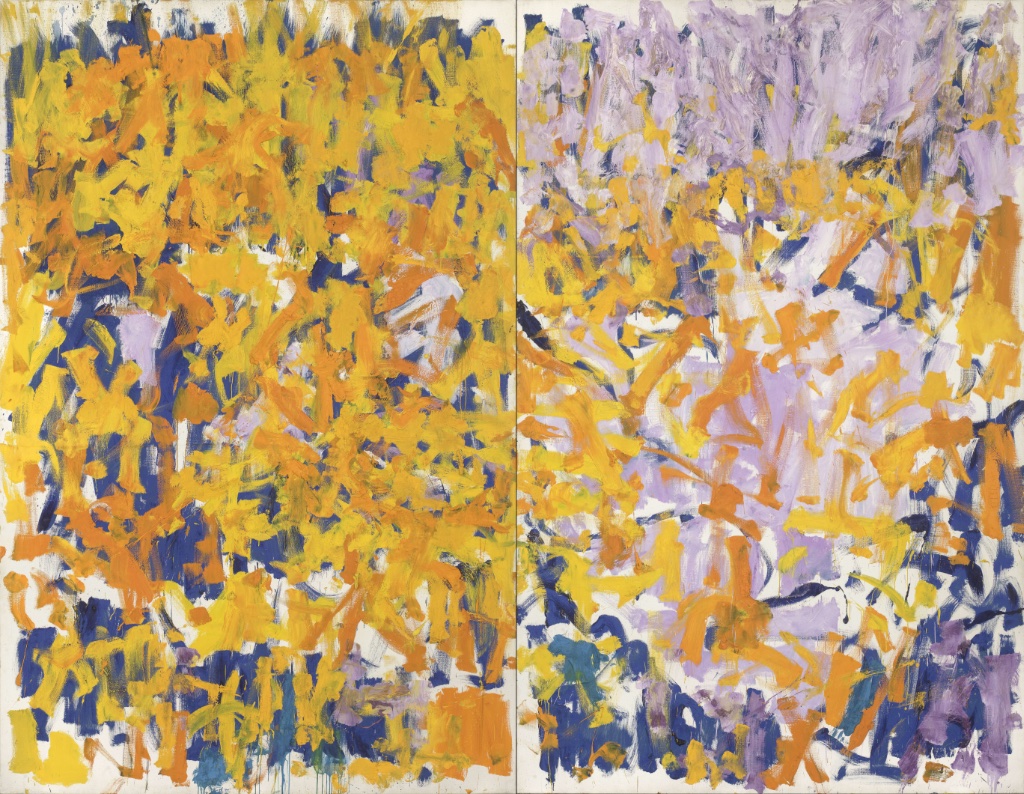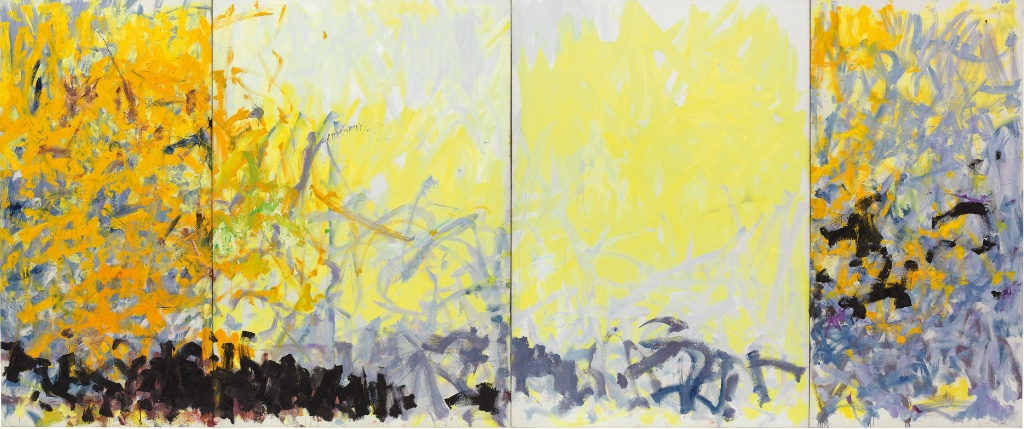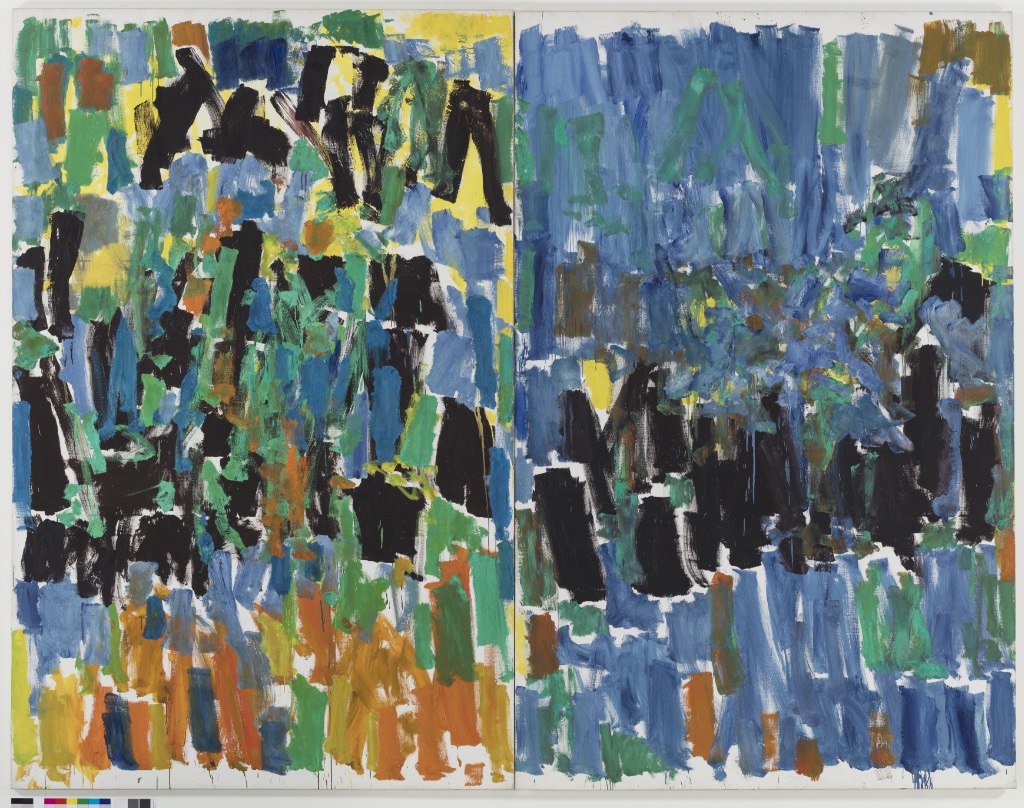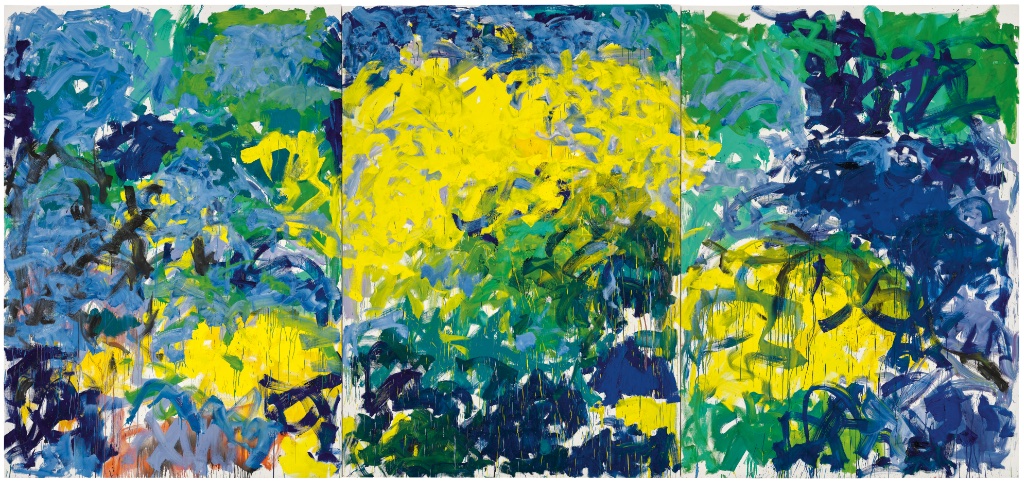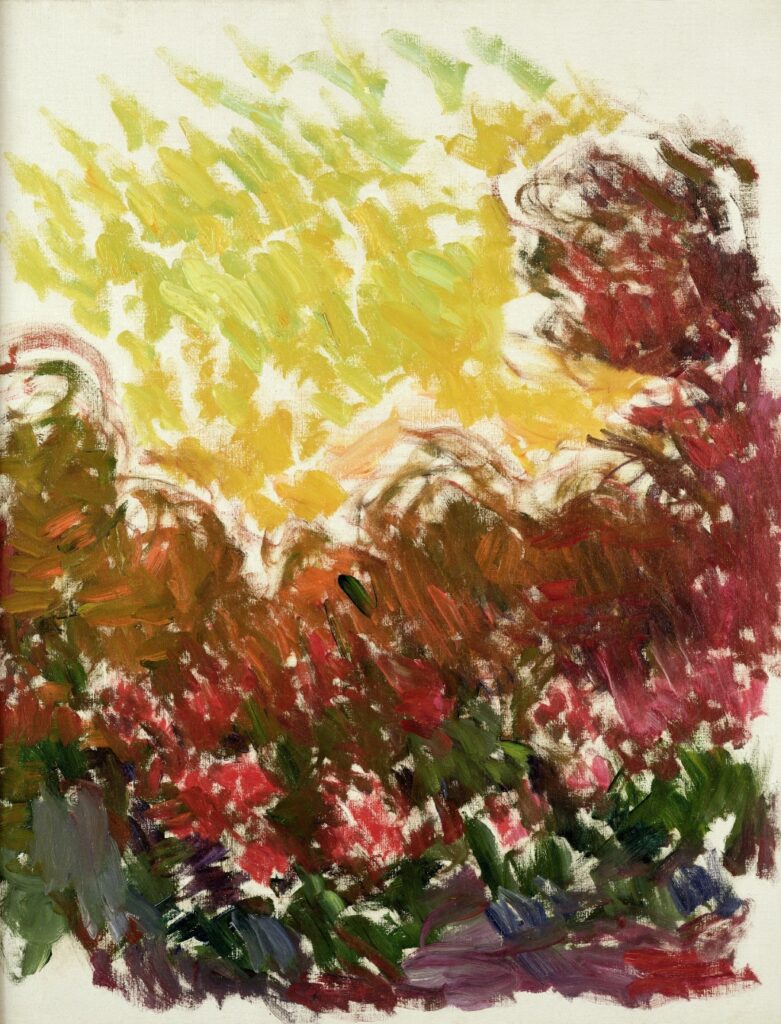The Fondation Louis Vuitton is devoting not one but two exhibitions to the great American abstract expressionist Joan Mitchell (1925-92). One is a retrospective of her work, and the other, “Monet-Mitchell,” compares some of her paintings with those of the Impressionist master.
The retrospective is a joy for the sheer beauty of her large-format paintings: explosions of brilliant color, none better than the monumental polyptych “Minnesota” (1980), which opens the show with its varying shades of brilliant yellow troubled by stormy grays and black and a smidgen of green.
While Mitchell’s highly gestural paintings appear to be entirely abstract, in her mind they expressed the “feelings” she retained from looking at the landscapes of her life. The titles of the works, given after each one was finished, often provide hints to what was on her mind while painting, as in “Harbor December” (1956).
Although Mitchell was a master colorist, she did have her dark periods, notably when she made what she called her “black paintings” between 1963 and ’65. One beautiful example is “Girolata Triptych” (1963), inspired by her memory of a cypress tree she saw while sailing in the Mediterranean. She explained that she was “trying for something more specific than movies of my everyday life: to define a feeling.” Other paintings were inspired by lines of poetry.
Born in Chicago, Mitchell lived for a time in New York City then moved to France, where she spent most of her career. She was one of the few female abstract expressionists to be accepted in her time, and even got to know some of the “boys” – including Franz Kline, Willem de Kooning and Philip Guston – and was one of only 11 women (of a total of 72 artists) to be chosen for the Ninth Street Show, the exhibition that established Abstract Expressionism as a valid art form.
In France, Mitchell lived first in Paris and then in Vétheuil, Normandy, where the view of the Seine from her country house inspired many of the paintings in the show.
She never returned to the figuration of her beginnings, but her work was always evolving subtly in terms of brushwork, color, technique (using rags rather than brushes, for example, or throwing paint at the canvas), painted forms and canvas formats (she began making polyptychs in 1956). None of this was random, however, but carefully considered. As she once said, “The freedom in my work is quite controlled. I don’t close my eyes and hope for the best. … I want to know what my brush is doing.”
One of the most beautiful rooms in the show, upstairs in Gallery 10, is also one of the most moving. For the first time, all the paintings from the series “La Grande Vallée,” densely painted canvases in shades of blue, green and brilliant yellow, are shown together. They were painted in memory of her beloved sister Sally. “[Painting] is the opposite of death,” she once said. “It permits one to survive; it also permits one to live.” Visitors might just find solace in these rooms as well.
The exhibition “Monet-Mitchell” compares late, near-abstract works by Monet, notably the Water Lilies, which inspired many Abstract Expressionists, showing how he and Mitchell were inspired by similar Norman landscapes and made similar color choices. “The two artists sought to fix a sensation or a feeling,” say the curators, “the memory of an emotion evoked by contact with nature and transformed by memory.” Some of the pairings of their work seem spurious, and Mitchell was probably more influenced by the work of Van Gogh and Matisse, but who can complain about seeing more of her paintings and many by the Impressionist master?
Like Alice Neel, whose work is currently on show at the Centre Pompidou, Mitchell went her own way and expressed herself fearlessly. In a filmed 1992 interview shown in the exhibition, she says, “They call me ‘sauvage’ in Europe because I’m direct, and I say what I think. You’re supposed to be diplomatic, which I call hypocrisy, and lying, really. [There are] lots of things women can’t be – ‘sauvage’ is one of them!”
Let’s hear it for sauvage women!
See our list of Current & Upcoming Exhibitions to find out what else is happening in the Paris art world.
Favorite
